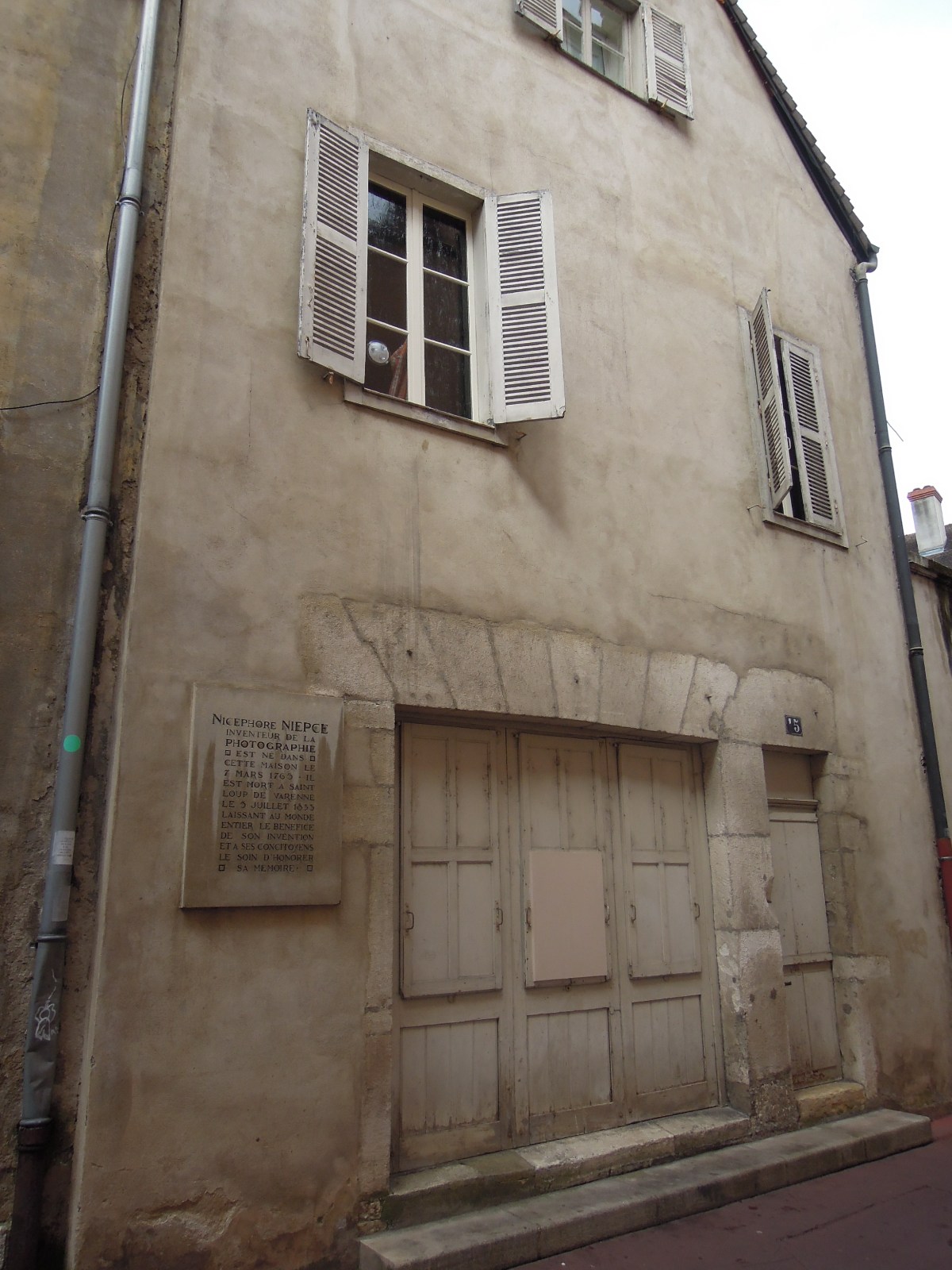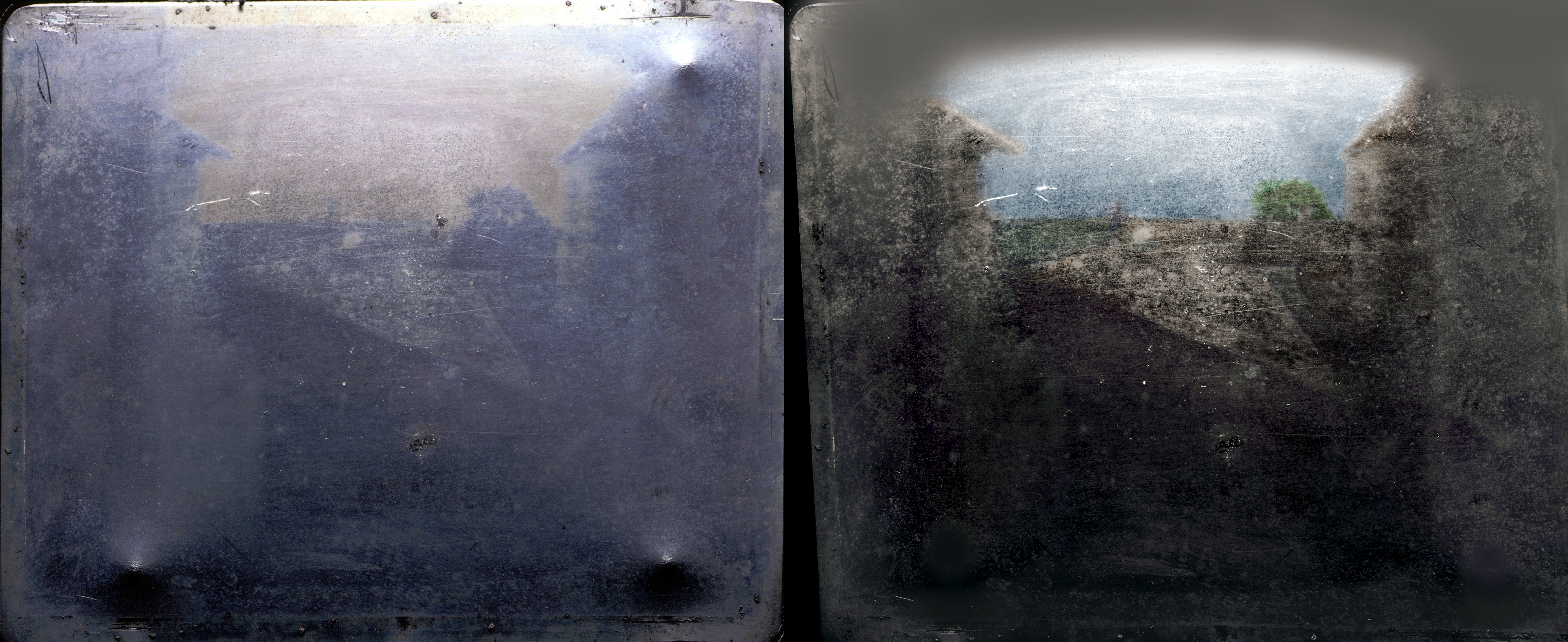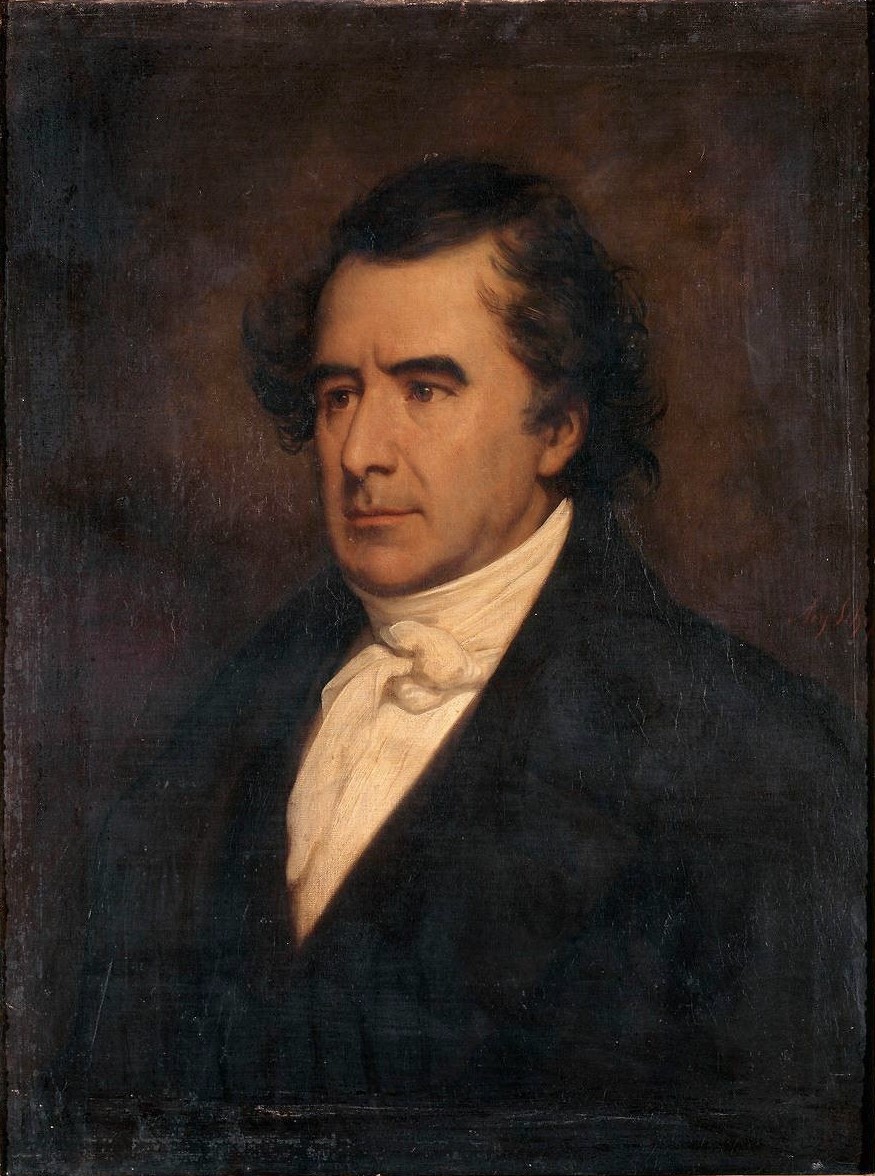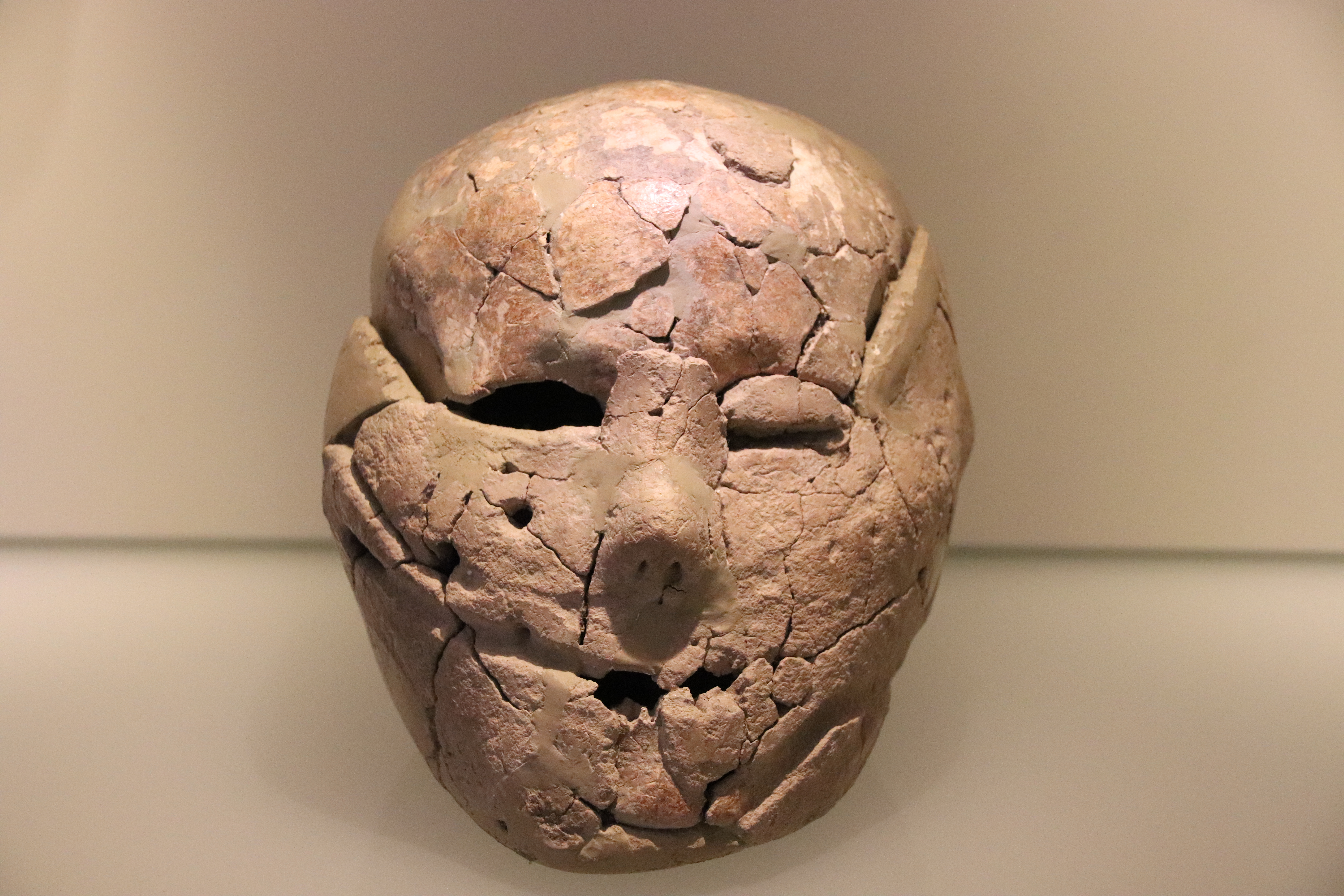|
Daguerre
Louis-Jacques-Mandé Daguerre ( , ; 18 November 1787 – 10 July 1851) was a French artist and photographer, recognized for his invention of the eponymous daguerreotype process of photography. He became known as one of the fathers of photography. Though he is most famous for his contributions to photography, he was also an accomplished painter, scenic designer, and a developer of the diorama theatre. Biography Louis Daguerre was born in Cormeilles-en-Parisis, Val-d'Oise, France. He was apprenticed in architecture, theatre design, and panoramic painting to Pierre Prévost, the first French panorama painter. Exceedingly adept at his skill of theatrical illusion, he became a celebrated designer for the theatre, and later came to invent the diorama, which opened in Paris in July 1822. In 1829, Daguerre partnered with Nicéphore Niépce, an inventor who had produced the world's first heliograph in 1822 and the oldest surviving camera photograph in 1826 or 1827. Niépce died ... [...More Info...] [...Related Items...] OR: [Wikipedia] [Google] [Baidu] |
Daguerreotype
Daguerreotype (; french: daguerréotype) was the first publicly available photographic process; it was widely used during the 1840s and 1850s. "Daguerreotype" also refers to an image created through this process. Invented by Louis Daguerre and introduced worldwide in 1839, the daguerreotype was almost completely superseded by 1860 with new, less expensive processes, such as ambrotype ( collodion process), that yield more readily viewable images. There has been a revival of the daguerreotype since the late 20th century by a small number of photographers interested in making artistic use of early photographic processes. To make the image, a daguerreotypist polished a sheet of silver-plated copper to a mirror finish; treated it with fumes that made its surface light-sensitive; exposed it in a camera for as long as was judged to be necessary, which could be as little as a few seconds for brightly sunlit subjects or much longer with less intense lighting; made the resulting ... [...More Info...] [...Related Items...] OR: [Wikipedia] [Google] [Baidu] |
Heliography
Heliography (in French, ''héliographie)'' from ''helios'' (Greek: ''ἥλιος'')'','' meaning "sun"'','' and ''graphein (γράφειν),'' "writing") is the photographic process invented, and named thus, by Joseph Nicéphore Niépce around 1822, which he used to make the earliest known surviving photograph from nature, '' View from the Window at Le Gras'' (1826 or 1827), and the first realisation of photoresist as means to reproduce artworks through inventions of photolithography and photogravure. Invention Nicéphore Niépce began experiments with the aim of achieving a photo-etched printmaking technique in 1811. He knew that the acid-resistant Bitumen of Judea used in etching hardened with exposure to light. In experiments he coated it on plates of glass, zinc, copper and silver-surfaced copper, pewter and limestone (lithography), and found the surface exposed to the most light resisted dissolution in oil of lavender and petroleum, so that the uncoated shadow are ... [...More Info...] [...Related Items...] OR: [Wikipedia] [Google] [Baidu] |
Diorama
A diorama is a replica of a scene, typically a three-dimensional full-size or miniature model, sometimes enclosed in a glass showcase for a museum. Dioramas are often built by hobbyists as part of related hobbies such as military vehicle modeling, miniature figure modeling, or aircraft modeling. In the United States around 1950 and onward, natural history dioramas in museums became less fashionable, leading to many being removed, dismantled or destroyed. Etymology The word "diorama" originated in 1823 as a type of picture-viewing device, from the French in 1822. The word literally means "through that which is seen", from the Greek di- "through" + orama "that which is seen, a sight". The diorama was invented by Louis Daguerre and Charles Marie Bouton, first exhibited in Paris in July 1822 and at The Diorama, Regent's Park on September 29, 1823. The meaning "small-scale replica of a scene, etc." is from 1902. Daguerre's and Bouton's diorama consisted of a piece of ma ... [...More Info...] [...Related Items...] OR: [Wikipedia] [Google] [Baidu] |
Bry-sur-Marne
Bry-sur-Marne (, literally ''Bry on Marne'') is a commune in the Val-de-Marne department in the eastern suburbs of Paris, France. It is located from the center of Paris. The commune of Bry-sur-Marne is part of the sector of Porte de Paris, one of the four sectors of the "new town" of Marne-la-Vallée. History Prehistory and early history Bry's name comes from the Celtic word ''Briw'', which means a bridge or a river crossing. The area has been inhabited since Neolithic times. The town's motto, which features on its coat of arms, is "''Moult viel que Paris''" - old French for "Much older than Paris". In 1903, archeologist Adrien Mentienne uncovered the bones of a large bovine which died 15,000 years ago. In 1982, the skeleton of a woman who died in the 5th century BC was uncovered beneath the playground of a school in Bry. It is now housed in the town'museum From that century onwards, there was a permanent human presence where Bry now stands. In 1886, a necropolis was found ... [...More Info...] [...Related Items...] OR: [Wikipedia] [Google] [Baidu] |
Nicéphore Niépce
Joseph Nicéphore Niépce (; 7 March 1765 – 5 July 1833), commonly known or referred to simply as Nicéphore Niépce, was a French inventor, usually credited with the invention of photography. Niépce developed heliography, a technique he used to create the world's oldest surviving product of a photographic process: a print made from a photoengraved printing plate in 1825. In 1826 or 1827, he used a primitive camera to produce the oldest surviving photograph of a real-world scene. Among Niépce's other inventions was the Pyréolophore, one of the world's first internal combustion engines, which he conceived, created, and developed with his older brother Claude Niépce. Biography Early life Niépce was born in Chalon-sur-Saône, Saône-et-Loire, where his father was a wealthy lawyer. His older brother Claude (1763–1828) was also his collaborator in research and invention, but died half-mad and destitute in England, having squandered the family wealth in pursuit ... [...More Info...] [...Related Items...] OR: [Wikipedia] [Google] [Baidu] |
The 72 Names On The Eiffel Tower
On the Eiffel Tower, 72 names of French scientists, engineers, and mathematicians are engraved in recognition of their contributions. Gustave Eiffel chose this "invocation of science" because of his concern over the protests against the tower. The engravings are found on the sides of the tower under the first balcony, in letters about tall, and originally painted in gold. The engraving was painted over at the beginning of the 20th century and restored in 1986–87 by Société Nouvelle d'exploitation de la Tour Eiffel, the company that the city of Paris contracts to operate the Tower. The repainting of 2010–11 restored the letters to their original gold colour. There are also names of the engineers who helped build the Tower and design its architecture on a plaque on the top of the Tower, where a laboratory was built as well. List Location The list is split in four parts (for each side of the tower). The sides have been named after the parts of Paris that each side faces: ... [...More Info...] [...Related Items...] OR: [Wikipedia] [Google] [Baidu] |
Samuel Morse
Samuel Finley Breese Morse (April 27, 1791 – April 2, 1872) was an American inventor and painter. After having established his reputation as a portrait painter, in his middle age Morse contributed to the invention of a single-wire telegraph system based on European telegraphs. He was a co-developer of Morse code and helped to develop the commercial use of telegraphy. Personal life Samuel F. B. Morse was born in Charlestown, Massachusetts, the first child of the pastor Jedidiah Morse (1761–1826), who was also a geographer, and his wife Elizabeth Ann Finley Breese (1766–1828). His father was a great preacher of the Calvinist faith and supporter of the Federalist Party. He thought it helped preserve Puritan traditions (strict observance of Sabbath, among other things), and believed in the Federalist support of an alliance with Britain and a strong central government. Morse strongly believed in education within a Federalist framework, alongside the instillation of Cal ... [...More Info...] [...Related Items...] OR: [Wikipedia] [Google] [Baidu] |
Panoramic Painting
Panoramic paintings are massive artworks that reveal a wide, all-encompassing view of a particular subject, often a landscape, military battle, or historical event. They became especially popular in the 19th century in Europe and the United States, inciting opposition from some writers of Romantic poetry. A few have survived into the 21st century and are on public display. Typically shown in rotundas for viewing, panoramas were meant to be so lifelike they confused the spectator between what was real and what was image. In China, panoramic paintings are an important subset of handscroll paintings, with some famous examples being '' Along the River During the Qingming Festival'' and ''Ten Thousand Miles of the Yangtze River''. History The word "panorama", a portmanteau of the Greek words ‘''pano''’ (all) and ‘''horama''’ (view), was coined by the Irish painter Robert Barker in 1787. While walking on Calton Hill overlooking Edinburgh, the idea struck him and he o ... [...More Info...] [...Related Items...] OR: [Wikipedia] [Google] [Baidu] |
View From The Window At Le Gras
''View from the Window at Le Gras'' is a heliographic image and the oldest surviving camera photograph. It was created by French inventor Nicéphore Niépce in 1827 in Saint-Loup-de-Varennes, France, and shows parts of the buildings and surrounding countryside of his estate, '' Le Gras'', as seen from a high window. Creation Niépce captured the scene with a camera obscura projected onto a pewter plate thinly coated with bitumen of Judea, a naturally occurring asphalt. The bitumen hardened in the brightly lit areas, but in the dimly lit areas it remained soluble and could be washed away with a mixture of oil of lavender and white petroleum. A very long exposure in the camera was required. Sunlight strikes the buildings on opposite sides, suggesting an exposure that lasted about eight hours, which has become the traditional estimate. A researcher who studied Niépce's notes and recreated his processes found that the exposure must have continued for several days. Early histo ... [...More Info...] [...Related Items...] OR: [Wikipedia] [Google] [Baidu] |
Cormeilles-en-Parisis
Cormeilles-en-Parisis (, literally ''Cormeilles in Parisis'') is a commune in the Val-d'Oise department in Île-de-France in Northern France. Inhabitants are called ''Cormeillais(e)''. Neighbouring communes * Argenteuil * La Frette-sur-Seine * Franconville * Herblay * Montigny-lès-Cormeilles * Sannois * Sartrouville Population Transport Cormeilles-en-Parisis is served by Cormeilles-en-Parisis station on the Transilien Paris-Saint-Lazare suburban rail line. It only takes 20 minutes to get to the station using ligne J from Paris Saint-Lazare. International relations Cormeilles-en-Parisis is twinned with Ware, United Kingdom. Notable residents Cormeilles-en-Parisis was the birthplace of: * Louis Daguerre (1787–1851), artist and chemist who is recognized for his invention of the Daguerreotype process of photography * Henri Cazalis (1840–1909), poet and man of letters * Charles-Arthur Gonse (1838-1917), major general of the French Army, Figure in the Dreyfus ... [...More Info...] [...Related Items...] OR: [Wikipedia] [Google] [Baidu] |
François Arago
Dominique François Jean Arago ( ca, Domènec Francesc Joan Aragó), known simply as François Arago (; Catalan: ''Francesc Aragó'', ; 26 February 17862 October 1853), was a French mathematician, physicist, astronomer, freemason, supporter of the Carbonari revolutionaries and politician. Early life and work Arago was born at Estagel, a small village of 3,000 near Perpignan, in the ' of Pyrénées-Orientales, France, where his father held the position of Treasurer of the Mint. His parents were François Bonaventure Arago (1754–1814) and Marie Arago (1755–1845). Arago was the eldest of four brothers. Jean (1788–1836) emigrated to North America and became a general in the Mexican army. Jacques Étienne Victor (1799–1855) took part in Louis de Freycinet's exploring voyage in the ''Uranie'' from 1817 to 1821, and on his return to France devoted himself to his journalism and the drama. The fourth brother, Étienne Vincent (1802–1892), is said to have collaborated with ... [...More Info...] [...Related Items...] OR: [Wikipedia] [Google] [Baidu] |
Portrait
A portrait is a painting, photograph, sculpture, or other artistic representation of a person, in which the face and its expressions are predominant. The intent is to display the likeness, personality, and even the mood of the person. For this reason, in photography a portrait is generally not a snapshot, but a composed image of a person in a still position. A portrait often shows a person looking directly at the painter or photographer, in order to most successfully engage the subject with the viewer. History Prehistorical portraiture Plastered human skulls were reconstructed human skulls that were made in the ancient Levant between 9000 and 6000 BC in the Pre-Pottery Neolithic B period. They represent some of the oldest forms of art in the Middle East and demonstrate that the prehistoric population took great care in burying their ancestors below their homes. The skulls denote some of the earliest sculptural examples of portraiture in the history of art. Historical ... [...More Info...] [...Related Items...] OR: [Wikipedia] [Google] [Baidu] |




.jpg)





